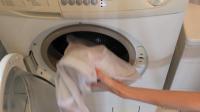A simple explanation of the efficiency of a steam engine
Nowadays, steam engines are hardly ever used any more. This is because they have a very low level of efficiency.

The industrial age began with the invention of the steam engine. It made work much easier and more efficient. In the course of time, however, it was replaced by internal combustion engines, as these are much more efficient.
A steam engine consumes a lot of energy
- Under the efficiency you have to look at the difference between the supplied energy and the power output of a machine. In the case of a steam engine, this would be the energy content of the fuel and the power actually delivered to the drive wheels.
- You probably know that steam engines were heated with hard coal. Of all solid fuels, hard coal contains the most energy.
- The combustion creates very hot air with which the water in the boiler is heated to a temperature of around 350 degrees Celsius.
- The heated air is cooled down again in a condenser. The energy released is converted into mechanical energy by pistons.
- It takes a lot of energy to heat the water in the large containers. In addition, the containers give off plenty of heat energy to the outside.
- The friction losses on the pistons also destroy energy. This means that only a small proportion of the energy from the hard coal actually reaches the drive wheel of the machine.
Calculation of the efficiency simply explained
If the point is that you should calculate the efficiency, then this is ...
In the case of heat engines, the following degree of efficiency can be expected
- The efficiency of steam engines, which are also known as heat engines, is very low.
- Due to the long heating of the water and the friction losses of the sometimes very large pistons of the energy from the hard coal a maximum of 16% on the drive wheel or the drive wheels of the machine at.
- For this reason, steam engines are no longer used today. In comparison, diesel engines have an efficiency of 40%. Electric motors even achieve up to 90%.
The efficiency of the steam engines was not particularly high, but without them there would have been no technical progress at the time.
How helpful do you find this article?


